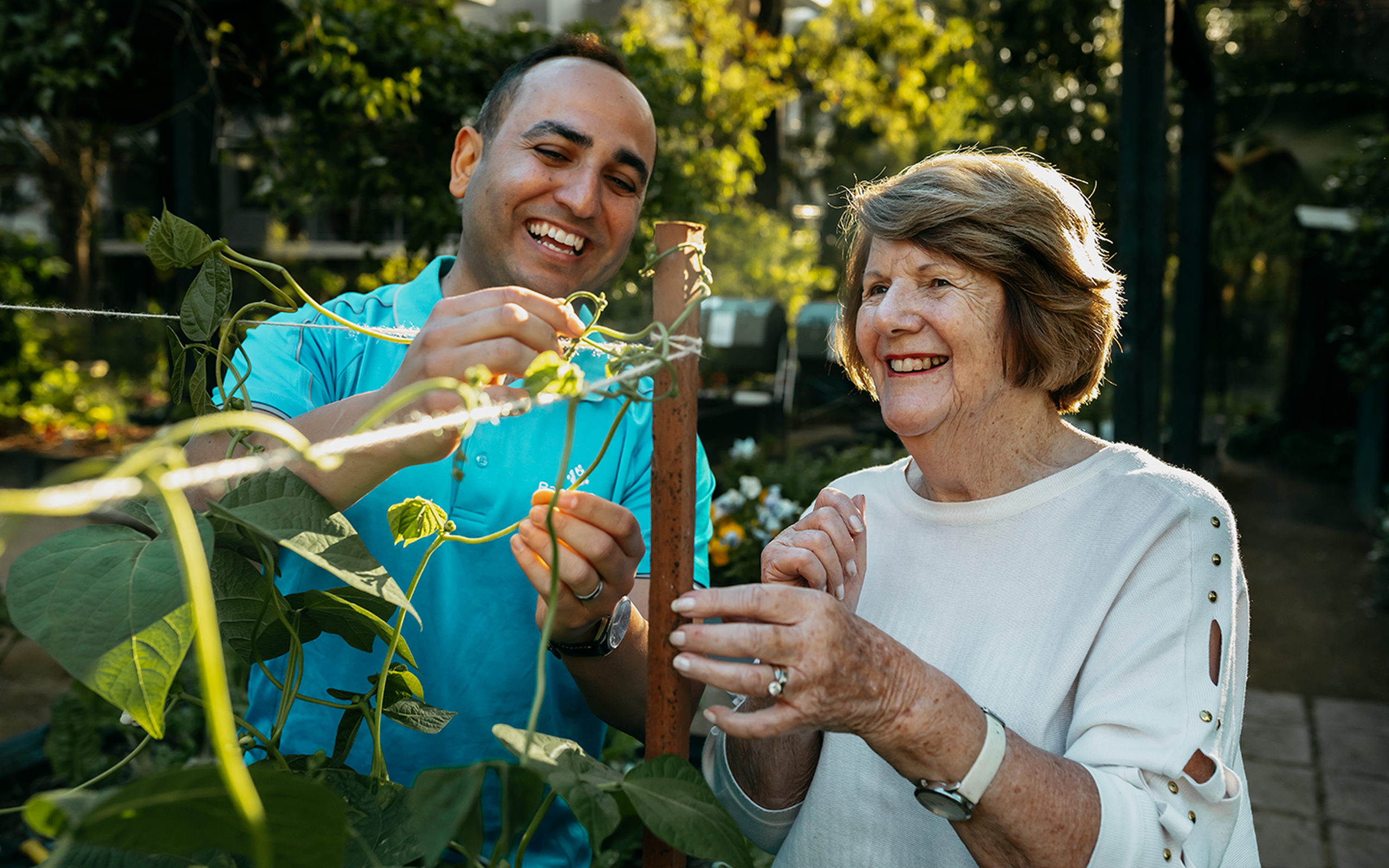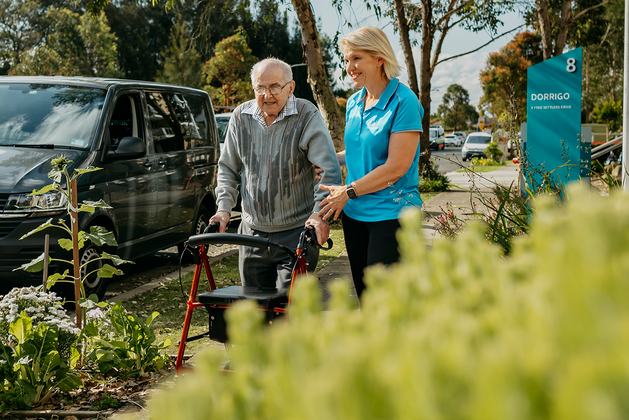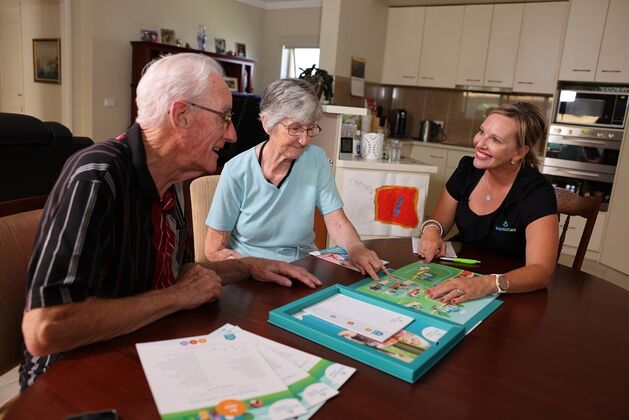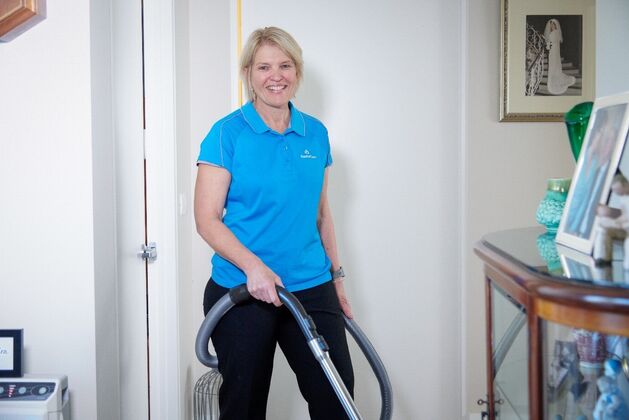What are the four levels of Home Care Packages - and what will they cost me?
Confused about Home Care Packages? Our blog delves into each of the four levels, explaining which services are included in each, how long you can expect to wait for funding, and what financial contributions may be required.
Scroll to Explore

29 February 2024
Stories
| Home Care
Home Care Packages are a form of government funding that helps older Australians live safely and well in the comfort of their own home.
Services offered through the Packages can vary widely depending on the need – they can range from weekly housekeeping to high level support for complex care needs.
To accommodate this broad spectrum, the government provides four distinct ‘levels’ of Home Care Packages, each catering to differing levels of need.
Additionally, those who are financially able are expected to contribute towards the cost of their care. Read on to learn more.
In this article:
What is a Home Care Package?
A Home Care Package (HCP) is a government-funded service that enables older Australians to continue living independently in the comfort of their own homes for as long as possible.
There are four Home Care Package levels. Each equates to a different sum of money that’s allocated to you as an annual budget and which goes towards care and services to help you live well at home.
Depending on your requirements and care needs, Home Care Packages can include a wide range of services, and we cover some of these below.

What services are included in the four Home Care Packages?

Each level of the Home Care Packages program caters for differing levels of care needs, with Level 1 designed for people requiring ‘basic’ support, and Level 4 providing the highest level of care for people with more complex requirements.
After completing an in-person assessment with a member of the Aged Care Assessment Team (ACAT) you will learn which Home Care Package level is best suited for your requirements, based on the following options:
- Level 1 Home Care Package -
> Level 1 is the entry level assigned to people that the government has assessed to have ‘basic’ care needs. Services might include housekeeping, help with meal preparation, and transportation.
- Level 2 Home Care Package -
> Level 2 is the third highest level of care available and is assigned to people that the government has assessed to have ‘lower-level’ needs. Services might include cleaning and assistance with personal care tasks, such as showering and dressing.
- Level 3 Home Care Package -
> Level 3 is the second highest level of care available and is assigned to people that the government has assessed to have ‘intermediate’ care needs. Services might include personal care, housekeeping, and visits from a range of health professionals who will treat you in your home.
- Level 4 Home Care Package -
> Level 4 is the highest level of care available and is assigned to people that the government has assessed to have more complex care needs. Services might include in-home nursing, alongside a multidisciplinary team who can support your clinical and personal care needs.
It’s important to note that Home Care Package guidelines are flexible, and you may require other services that aren’t listed here.
Your provider will work with you to establish a care plan that includes several coordinated services to suit your needs.
How much will my Home Care Package cost me?
In Australia, the bulk of home care costs is subsidised by the government, however, if you can afford it, you’ll also be required to contribute.
The amount that you pay is determined by an Income and Assets Assessment, conducted by Services Australia.
In this way, it’s helpful to think of your Home Care Package as a ‘pot’ of funds made up of:
- your government subsidy (if eligible),
- any additional government supplements (if eligible), and;
- your own contribution (if required).

Let’s look at each of these in turn:
How much is the government subsidy for Home Care Packages?
If you are eligible for government subsidies, you can expect the following rates:
HCP Level | Daily Rate | Fortnightly rate | Monthly Rate | Annual Rate |
1 - Basic care | $28 | $394 | $856 | $10,271 |
2 - Low-level care | $49 | $692 | $1,505 | $18,064 |
3 - Intermediate care | $108 | $1,508 | $3,276 | $39,311 |
4 - Complex care | $163 | $2,286 | $4,966 | $59,594 |
*Note: Rates are as of February 2024. Figures have been rounded to the nearest decimal. You can view the most up-to-date subsidy rates here.
What are government supplements for Home Care Packages?
In addition to these subsidies, you may also be eligible for government supplements that can help with the cost of meeting specific care needs.
You might be eligible for these if you are:
- Living with dementia
- Have an ongoing need for the administration of oxygen
- Live in a rural and remote area
- Experiencing financial hardship
You can find out more about the current rates of government supplements, and the eligibility criteria, here.
How much will I have to contribute?
There are two main components to the fees you might pay towards your home care. These are:
How long are the wait times for Home Care Packages?
The demand for government subsidised Home Care Packages in Australia is high and wait times can be anywhere from three to twelve months, depending on your care needs and level of priority.

While you are waiting for your subsidy to come through, you can still access in-home care services in one of the following ways:
How do I choose a Home Care Package Provider?
Following your in-person assessment with a member of the Aged Care Assessment Team (ACAT), your assessor will be able to write you a referral for a local provider, or you can choose your own.
If you are choosing your own provider, you will be given a referral code, which you’ll give to your chosen operator so they can start organising services for you.
It’s important to know that you have 56 days to choose a government-approved care provider and provide them with this referral code.
Unfortunately, if you do not sign with a provider in this time or request an extension, it will expire, and you will need to reapply to go back on the national waiting list.

Get in touch with BaptistCare at home
We are one of Australia’s largest and most trusted providers of home care for seniors, delivering loving, respectful, and reliable care to more than 15,000 people across NSW, ACT, and WA.
If you would like to know more about BaptistCare’s home care services, our friendly team are here to help you.
We’ll listen, guide you through the care and support we have available, and provide tailored advice for your particular situation.
Please call 1300 275 227 (Monday to Friday, from 8:00am to 6:00pm) or email us at ask@baptistcare.org.au.